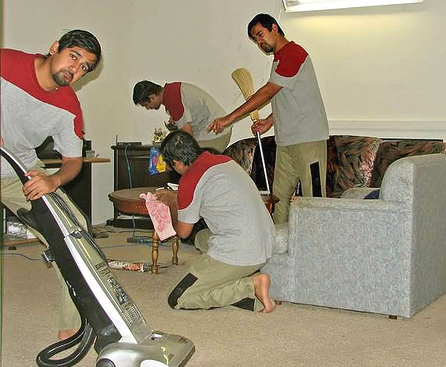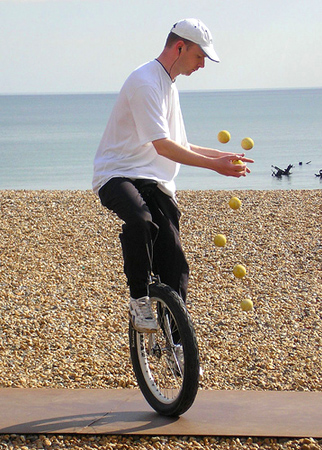
In my last post, “How to Get a Lot of Different Things Done Without Going Crazy,” I mentioned molecular neurobiologist John Medina’s point that our brains are structured so that we can only focus on one thing at a time. In Medina’s book Brain Rules, he asserts, “the brain cannot multitask.” It’s a really important point, but he is making it in a confusing way, because Medina goes on to say he’s only referring to “the brain’s ability to pay attention.” As you know if you’ve ever driven the wrong way because your mind was on something else, doing a thing doesn’t always mean paying attention to it. Medina is telling us that we can’t multifocus. Multitasking is not only possible, it’s a terrific way to get dull things done without getting bored, if used in the right way.
But since we can’t focus on more than one thing at a time, that means that if we’re multitasking, we can have at most one thing tying up our attention at a time: past that first thing, anything else we do can’t be something requires attention: it has to be something we’ve done over and over the same way.
I like folding laundry, because I always use laundry folding time to watch a movie with my son. We dump all of the clean laundry in the middle of the living room, sit around the pile, and gradually transform the pile into neat stacks of folded clothing. We take our time, talk about the movie a little when we feel like it, and when we’re done we hardly feel like we’ve done any work. It’s my son’s favorite chore, and I count it more as leisure than work.
 But it’s easier for me than for my son, because I’ve been folding clothes for decades, while my son has only been doing it for a few years. Several times every folding session, I’ll notice he’s stopped folding, his attention fully on the movie. Usually this happens with a trickier item of clothing or with a particularly gripping part of the movie. Not being as used to folding as me, he can’t do it entirely on automatic, so his brain needs some of his attention for the folding, and his attention is already taken up by the movie. Since he can’t pay attention to two things at once, the clothes folding just stops, and since he was doing it automatically, he may not even notice: he may just sit there holding the shirt, transfixed.
But it’s easier for me than for my son, because I’ve been folding clothes for decades, while my son has only been doing it for a few years. Several times every folding session, I’ll notice he’s stopped folding, his attention fully on the movie. Usually this happens with a trickier item of clothing or with a particularly gripping part of the movie. Not being as used to folding as me, he can’t do it entirely on automatic, so his brain needs some of his attention for the folding, and his attention is already taken up by the movie. Since he can’t pay attention to two things at once, the clothes folding just stops, and since he was doing it automatically, he may not even notice: he may just sit there holding the shirt, transfixed.
“Fold,” I remind him, and he takes the few seconds necessary to focus on the clothing and start folding it, at which point his brain can go back to the movie.
I can understand if you don’t think of watching a movie and folding clothes as multitasking (though since I write a lot of fiction and analyze movies for plot, character, pacing, and emotional impact as I watch, watching movies for me is fun work instead of just fun), but even using our attention for fun can make boring work enjoyable.
So multitasking is simple, but multitasking attempts are doomed to fail unless the extra tasks being done are near-automatic ones. In terms of prioritizing tasks if we want to get a lot done, this suggests that it’s helpful to save the really mindless ones for a time when we’re doing something else with our mind: planning, talking on a headset phone (they’re not expensive, and they’re a good way to get housework done painlessly for some people), or even relaxing with a movie. But since even automatic tasks require a little bit of attention from time to time, we generally can’t focus intensely on one thing while automatically doing another: for example, we can’t multitask and still expect to get into flow.
I’m not suggesting we need to fill every moment of our lives with as much productivity as possible, but when we have a lot of things in front of us to do, it can help to know that some of the dullest tasks can be done while our brains are elsewhere. While there are other good ways to accomplish boring tasks, there’s a certain satisfaction in getting two things done at once: it makes us feel organized and confident, and that feeling itself is a great motivator.
Replicated guy cleaning photo by waveking1
Photo of unicyclist Tom James by Elsie esq.


